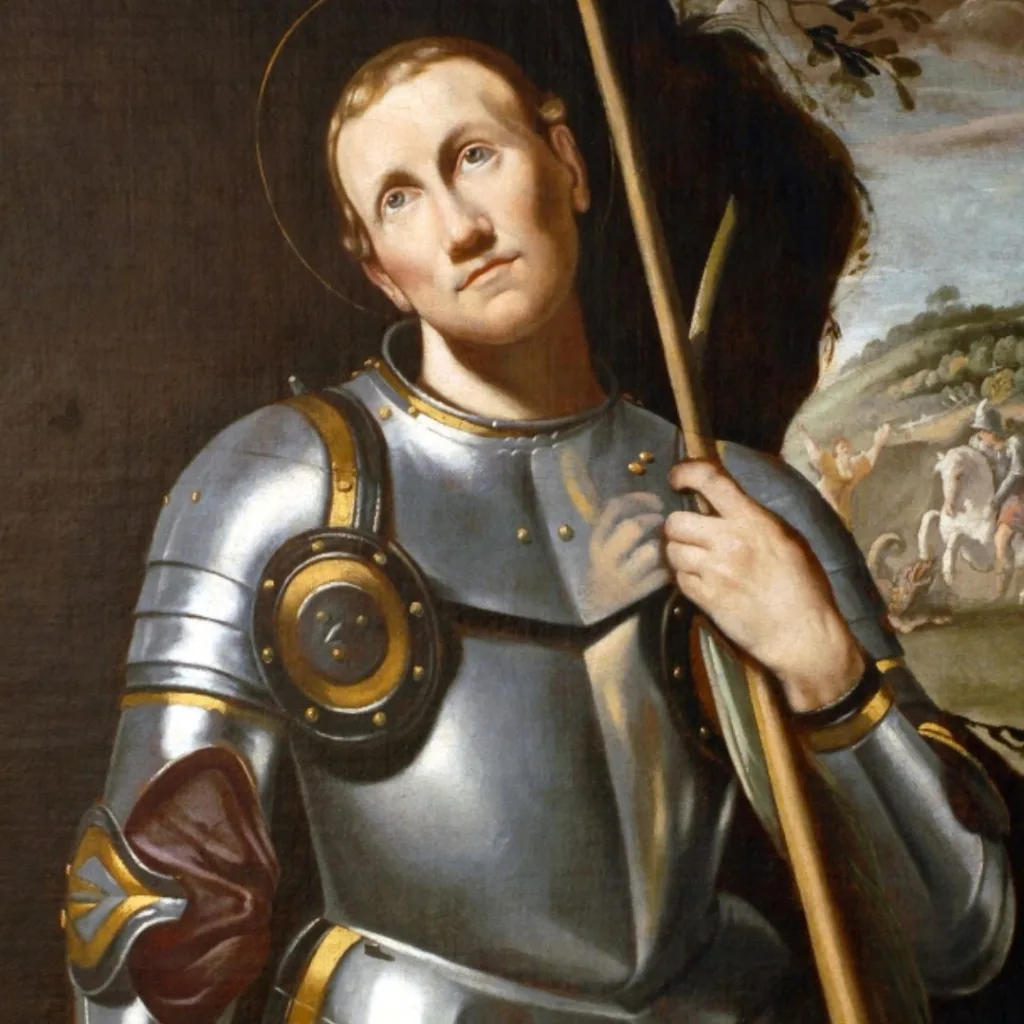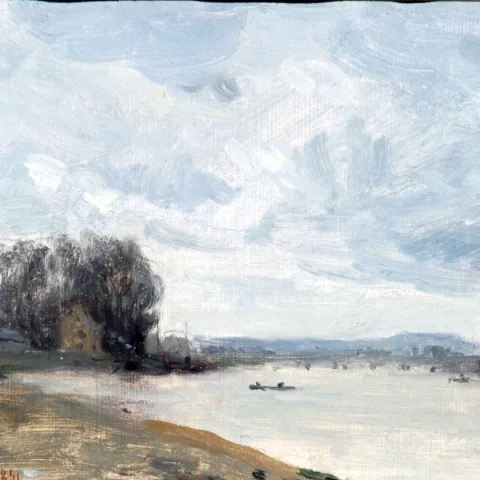The Bowes Museum Blog

St George


The painting
Today we celebrate St George’s Day by looking at a superbly preserved 17th century painting of England’s Patron Saint in our collection. The artwork was made by the apprentices of the renowned Italian Baroque painter Domenichino. In the foreground we can see St George victorious, sitting on the defeated dragon. In background, St George charges the dragon on a white horse (symbolising purity) whilst the princess stands to one side, her arms raised, signifying her joy at being rescued.

The subject
To early Christians dragons symbolised evil. So the conversion of a heathen country to Christianity by a saint would often be depicted in symbolic form, as a dragon being slain with a spear. St George was depicted in this manner to signify the conversion of Cappadocia (now part of Turkey) to Christianity; Cappadocia was often personified by a maiden. The story was later adapted and St George was said to have fought a dragon, outside the walls of a city, in order to rescue a princess who had been offered to appease the dragon.

St George is the patron saint of England, his red cross forming the national flag of England, and part of the Union Jack, the flag of the United Kingdom. During the 16th century Northern Italy was in a perpetual state of war. St George was the patron saint of a number of Italian cities including Venice and Ferrara. Courts were greatly concerned with military matters and it became popular for gentlemen from the ruling families to be depicted as St George, a figure associated with valour.
The painter
Domenichino, full name Domenico Zampieri, was born in Bologna where he graduated from the Accademia degli Incamminati under the famous Annibale Carracci, who was one of the founders and leaders of the academy. It was here that Domenico got his nickname of Domenichino, little Domenico; back then, nicknames were given to artists based on where they were from or to make them recognisable from other similarly named people. One artist more widely known by his nickname was Canaletto meaning ‘little canal’. Giovanni Antonio Canal (Canaletto) got his nickname to make it easier for people to refer to him whilst he was working on the site with his father.
After graduating, Domenichino left Bologna for Rome where he enjoyed a good career, at first by assisting Annibale Carracci with big fresco commissions, together with Bolognese colleague Guido Reni. After Carracci’s passing Domenichino started undertaking projects on his own.
After the election of Gregory XV, a Bolognese pope, Domenichino was appointed papal architect and although he built very little, he left a legacy of drawings and plans for very important buildings in Rome such as Sant’Adrea della Valle and Sant’Ignazio. He also continued to create frescos and paintings in famous palazzos.
He spent his last years painting the Cappella del Tesoro di San Gennaro in Naples Cathedral.
In the 19th century Domenichino was heavily criticised by the English art Critic, John Ruskin as being ‘insincere’ and ‘eclectic’ which placed the 17th century artist in an artistic graveyard. In 1982 art critics like John Pope-Hennessy, Evelina Borea and Richard Spear resurrected Domenichino’s name and gave him his rightful place amongst the influential painters of his century. The first major exhibition celebrating Domenichino’s career was held in 1996 at the Palazzo Venezia in Rome.
The St George painting was purchased by John Bowes in 1841 for 7 guineas. It can be admired, in the same Picture Gallery as the Canalettos.







